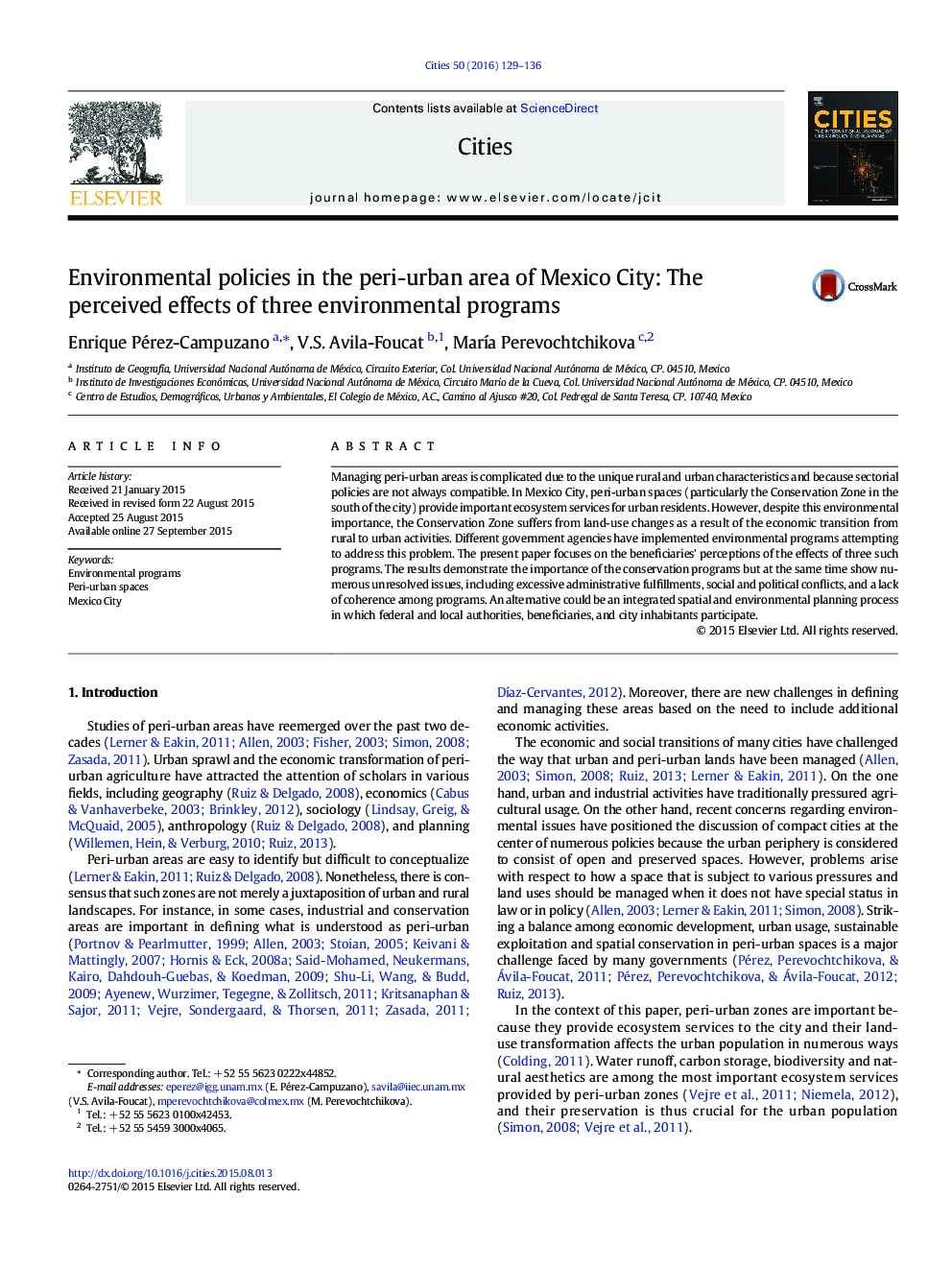| Article ID | Journal | Published Year | Pages | File Type |
|---|---|---|---|---|
| 1008209 | Cities | 2016 | 8 Pages |
•Beneficiaries' perception of three different environmental programs in the peri-urban zone of Mexico City is assessed•Results show the relevance of this programs•The principal problems are the excessive paperwork, conflicts within the communities, and the time of the program’s incidence
Managing peri-urban areas is complicated due to the unique rural and urban characteristics and because sectorial policies are not always compatible. In Mexico City, peri-urban spaces (particularly the Conservation Zone in the south of the city) provide important ecosystem services for urban residents. However, despite this environmental importance, the Conservation Zone suffers from land-use changes as a result of the economic transition from rural to urban activities. Different government agencies have implemented environmental programs attempting to address this problem. The present paper focuses on the beneficiaries' perceptions of the effects of three such programs. The results demonstrate the importance of the conservation programs but at the same time show numerous unresolved issues, including excessive administrative fulfillments, social and political conflicts, and a lack of coherence among programs. An alternative could be an integrated spatial and environmental planning process in which federal and local authorities, beneficiaries, and city inhabitants participate.
